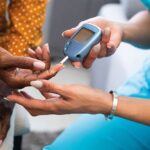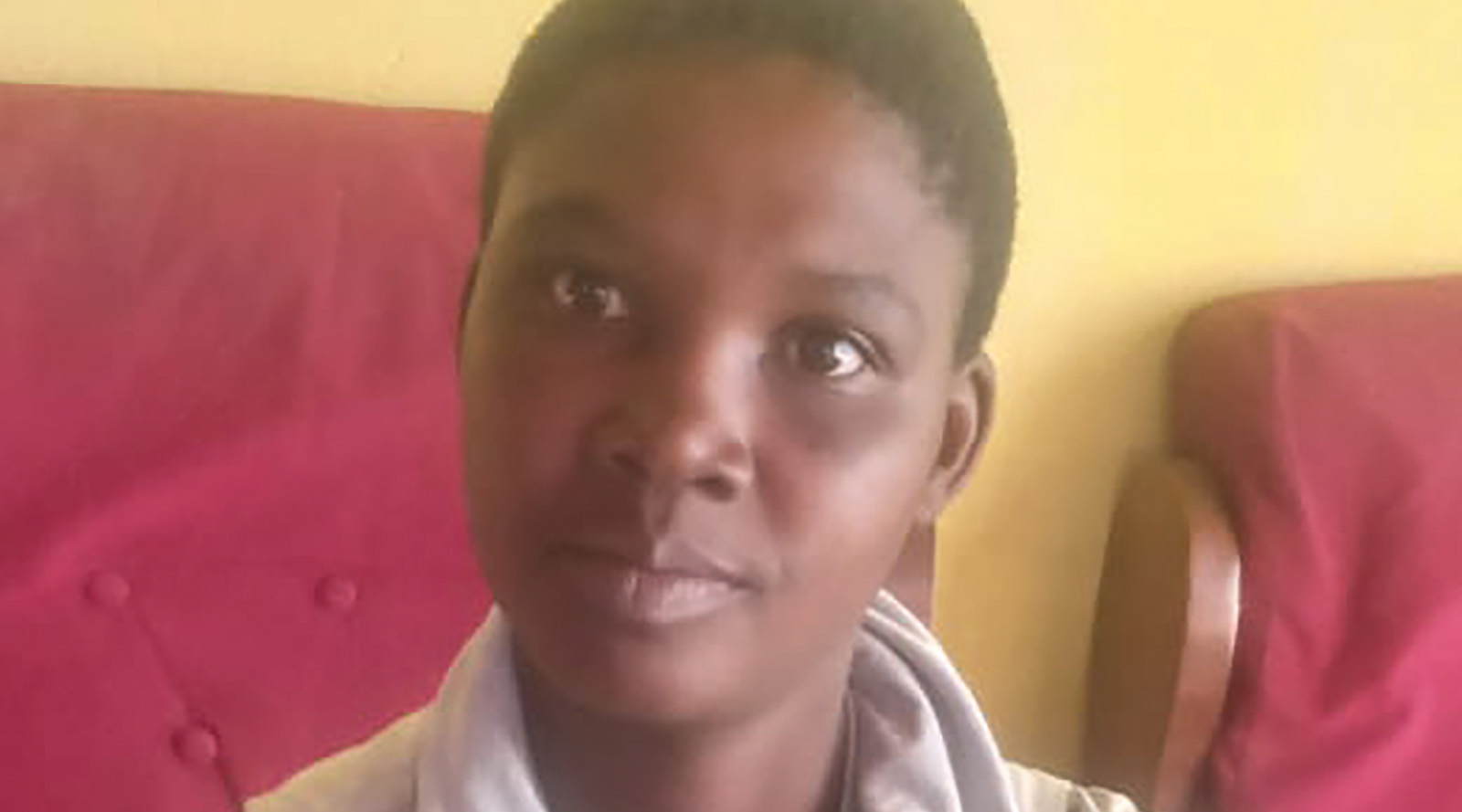Diabetes is a silent killer; take action now

SHARE THIS PAGE!
The Diabetes Association Lesotho (DAL) in collaboration with the ministry of health recently joined the rest of the world to commemorate Diabetes Day in Maseru. This year’s theme is; ‘Know your Risk, Know your Response’.
In an interview with theReporter’s ‘Mantšali Phakoana on the sidelines of the event, DAL president Motsamai Mokoto highlighted the significance of all stakeholders to take action and minimise the impact of the disease in Lesotho.
As a leader of the diabetes community in the country, please tell us about the Diabetes Association Lesotho and its objectives.
Formed in 2003, Diabetes Association Lesotho has been registered under the Society’s Act, 1966. The association collaborates with the ministry of health and other partners in contributing towards the health of Lesotho’s citizens through various activities.
DAL has membership with other organisations like International Federation of Diabetes under the watchful eye of World Health Organisation (WHO).
Our objective is to minimise the impact of diabetes by stepping up awareness campaigns in rural and all areas where people gather for clinical services for type 1 and 2 diabetes. The association also improves education among adults and youths.
We also campaign for people with diabetes by encouraging other organisations and all our partners to help them in any means they can including financially.
The association further minimises the impact of the disease by ensuring our members receive quality services at all health centres countrywide. Everyone deserves good care and attention at all times.
And lasty, we recruit new members to ensure that they understand issues like risks and responses to diabetes.
What are the most common types of diabetes and possible dangers?
First of all, it is important for people to understand that diabetes is a chronic disease in which the body cannot properly manage blood sugar known as glucose levels. If not well controlled, the condition can lead to a number of serious health complications like too much blood sugar (hyperglycaemia) and in the long run, damages the body. But the good news is that the disease can be managed.
The main symptoms of diabetes include; regular severe feeling of thirst, hunger, tiredness, blurry vision, inexplicable weight loss, frequent urination, frequent infections of the skin, urinary tract, or vaginal wounds that do not heal.
The symptoms of type 1 and 2 are more similar but usually less severe in type 2.
Type 1 diabetes is the more serious but less common form of the disease. It is usually diagnosed in children and young adults although it can happen at any age. It affects both men and women equally. With type 1, the body does not produce insulin, therefore a person living with this type will need to inject themselves on a daily basis. It is not preventable but treatable. Insulin therapy and other treatments assist children and adults to manage the disease and lead healthy, long lives. It is not fully understood, but doctors believe genes may play a role.
Type 2 is the most common form of diabetes. It was initially found only in adults, but now it is also manifesting in children. At this stage, the body does not use insulin properly. This is known as insulin resistance. At first, the pancreas makes extra insulin but cannot keep it up and eventually it fails to make enough to keep the blood glucose at normal levels.
When glucose doesn’t go into one’s cells but stays in the blood, the cells become starved of energy. High blood glucose leads to health problems particularly heart, nerves, eyes and kidneys. Type 2 is caused by a number of things that include genes, but it is mostly associated with being overweight. If one can keep the body glucose, blood pressure and cholesterol in check, they may be able to delay or even prevent problems.
There is also another type of diabetes called ‘gestational diabetes’ which develops in pregnant women who have never had diabetes. If one has gestational diabetes, a baby could be at higher risk of health problems. Gestational diabetes usually goes away after the baby is born. However, it increases the risk for type 2 diabetes later in life. The baby is more likely to have obesity as a child or teenager and develop type 2 diabetes later in life.
What is the association doing to lead improvements to diabetes care countrywide? Any significant milestones in DAL’s 20years of existence?
Through our advocacy as DAL, the government via the ministry of health is now providing medical services for diabetic people at all health centres. Local financial institutions, supermarkets, retailers and hardwares have always listened to our plea to support diabetic people through financial contributions and groceries.
We collaborate with relevant service providers like ministry of health and Elizabeth Glaser Pediatric AIDS Foundation (EGPAF) for them to support diabetic people. For example, we ask these partners to provide testing machines for diabetic people. We also advocate for their needs, to ensure that the disease is considered any emergency.
The association has established branches and committees in all districts of Lesotho and has 550 members. It has also opened a bank account in which association finances are saved. We have established a national executive committee to which all district members report. Also, we have set up online forums to discuss diabetes issues.
What activities can people do to get involved in changing health?
In general, people should exercise regularly because this helps manage a wide range of ailments, both physically and mentally. It the case of diabetes, exercising specifically assists by lowering the blood glucose, blood pressure and cholesterol. Exercising is an important part of treating both type 1 and 2 diabetes. Exercising also helps in blood circulation, this is very crucial. In the worst scenario, a diabetic person who does not excise may end up having some parts of their body, like legs, cut as a result of blood not circulating well.
As I said before, type 2 is often associated with being overweight, therefore it is important to achieve and maintain a healthy body weight. Type 1 however needs more careful planning as one needs to balance the insulin dose of food with any activity. Diabetic people can make a difference with any form of activity, for example walk rather than drive. Where possible take the stairs rather than a lift.
Does having diabetes require a certain diet?
Definitely, diabetic people at all times should be careful of what they eat. They should avoid eating starchy food like papa, rice, pasta and others because they have high sugar levels in nature. Starch is dangerous for diabetes. If diabetic people eat such foods, it should be in low quantities. They must also ensure there are vegetables in that meal. They should practise eating fibre and processed meals and also drink a lot of water regularly.
Is the country’s healthcare system and medical facilities adequate to cater for diabetes?
Our health care system has slightly improved over the years when it comes to diabetic services. We should appreciate that services, especially at government health centres, are affordable to a large portion of the diabetes community. However, there is still need to provide special services to diabetic people due to the nature of the disease. There has never been a time when our health professional address issues surrounding diabetes at public health centres. Education is still required from our health professionals.
What would you say is the biggest challenge for people living with diabetes in Lesotho?
Even though there has been achievements in some aspects, the association is still faced with a massive shortage of financial resources which constraints its ability to fulfill its mandate and objectives.
Our association depends solely on limited members’ contribution to transect its mandate. The global economic downturn coupled with inflation have hit hard on our members’ ability to access proper food for diabetes, hence control measures are in limbo.
Lack of commitment by health management teams in some districts to meet and enhance cooperation in the areas of education training for members, who are willing to give support to those already affected by the diabetes, is another worrying matter.
Lack of donors to provide material support for those highly poverty-stricken citizens living with diabetes with glucometers machines, glucostix and other accessories in order to self-monitor hyperglycaemia and hypoglycaemia is also a major concern. Further, we do not have government subsidies to cushion patients from the escalating prices of food.
Could you give us a picture of the incidence of diabetes in Lesotho?
I do not have recent statistics. However, the International Diabetic Federation showed that about 1400 were living with the disease in the country in 2021. We should not overlook that there are still diabetic people in our villages, specifically in the remote areas, who have not gone to health centres. Some of them have no idea that they have diabetes.
If you could share a message in regards to diabetes in Lesotho with the government or anyone reading this, what would you say?
Diabetes is a silent killer. People are dying of the disease; some did not know they had it while others took it for granted. It is important that people often visit health centres to test for diabetes, regardless of their age. Also look out for its signs and take action before it becomes too late.
We plead with government to consider diabetes an emergency disease requiring more attention and to allocate more funds through the budget to help diabetic patients in the face of high food prices.
We also want government to separate diabetes patients from others and provide specialised physicians and pharmacists to attend to them timeously.
As DAL, we call on government to provide such patients with monthly stipends and coupons for use at grocery shops, just like people living with disabilities.


New border plan to advance regional trade
10 days ago
Foul language lands man in court
10 days ago
Youth demand action on unemployment
10 days ago
Ex-ministers threaten to sue govt
10 days ago
CBL launches LERIMA awareness campaign
10 days ago

Youth unemployment declared a state of emergency
12 days ago

Alliance extends deal with premier league teams
13 days ago